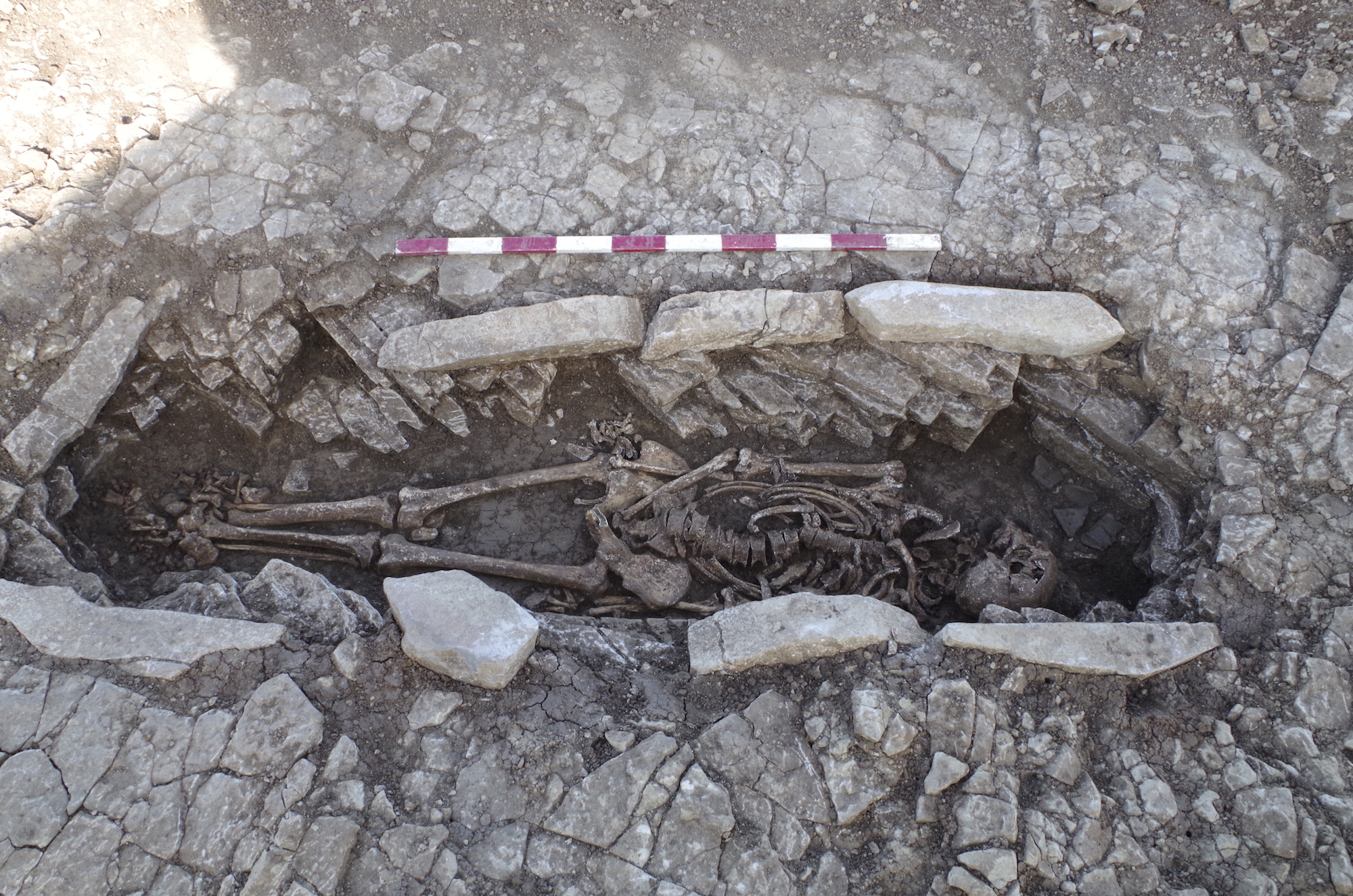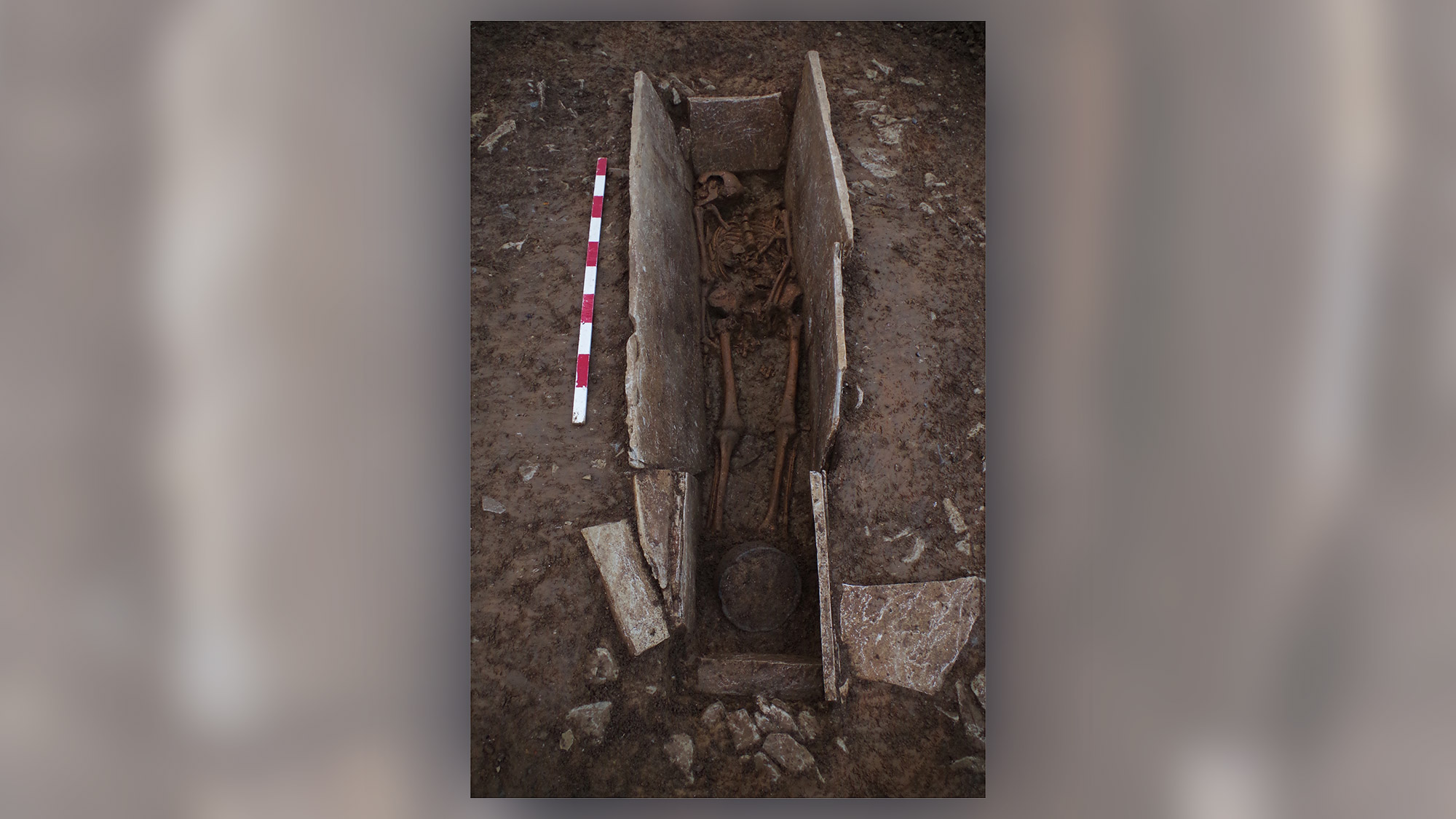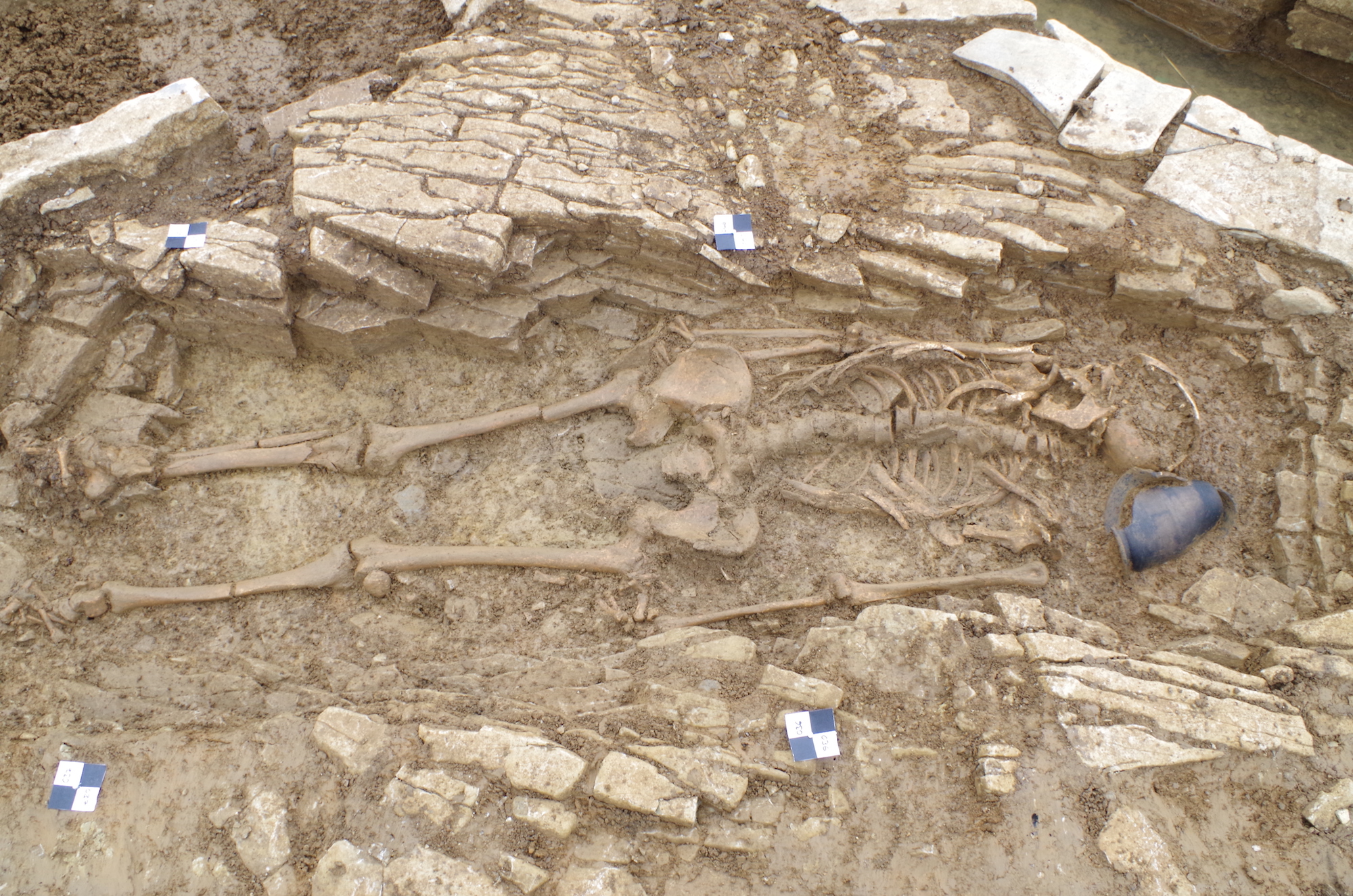50 Graves of Slaves Who Toiled at a Roman Villa Unearthed in England
Nearly all of the burials had tiny nails at the foot of them, indicating that the deceased were buried in hobnail boots.

Archaeologists have uncovered what may be the graves of 50 enslaved workers who labored at an elite Roman villa just under 2,000 years ago in what is now southern England.
These burials date to the Roman period in the United Kingdom, from about A.D. 43 to A.D. 410. Many of the deceased were buried with grave goods, such as pottery and brooches, in what is now Somerset, a county in southwest England.
"It's relatively rare to excavate this number of Roman burials in our region, but in particular, in this case, we are very confident that all the burials are people who worked on a Roman villa estate," said Steve Membery, a senior historic environment officer at South West Heritage Trust in the United Kingdom, which oversaw the archaeological excavation.
Related: Photos: Mosaic Glass Dishes and Bronze Jugs from Roman England
These laborers likely weren't paid for their work, he noted.
"They are most likely household servants, agricultural workers, and many may have technically been slaves," Membery told Live Science in an email. "So, this is a rare opportunity to study a sample of a community."
That community appears to be a culture native in the area, and seems to have merged Iron Age and Roman era burial practices. Some of the buried individuals likely held a high status within their community, Membery added. For instance, an older woman buried with her head on a pillow in a stone-built, coffin-like box (known as a cist) was likely an important person, he said.
Sign up for the Live Science daily newsletter now
Get the world’s most fascinating discoveries delivered straight to your inbox.
Archaeologists also found small nails at the foot of the burials, indicating that many of the people were laid to rest in leather hobnail boots, according to The Guardian.

"The burials also show early adoption of Roman burial practices, such as offerings, alongside traditionally Iron Age characteristics," Membery said in a statement. It's likely that these were British individuals who began following the customs of the Roman invaders, but DNA tests will be needed to support that idea, Membery noted.
Archaeologists found the burials while surveying the area ahead of the construction of a new school. The graves were dug into the bedrock, many with tops and bottoms lined with flat stones to create a coffin. Some of the graves had tented stone roofs, which are less common for this area, Membery said.
Archaeologists also found traces of Iron Age round-shaped houses as well as a Roman building, in the area. The villa itself has yet to be found, but an outhouse and a barn that may be part of it have been discovered, The Guardian reported.

During the excavation, researchers from Wessex Archaeology found a number of treasures, including pots that were placed next to the heads of most of the deceased. These pots were likely offerings, Membery said.
In addition, the team found coins with the likeness of the Roman emperor Vespasian (who reigned from A.D. 69 to 79), carved bone that once was likely part of a knife handle and an unusual lead weight that was probably part of a survey tool called a groma, which is similar to a sextant.
"This site is a significant discovery — the most comprehensive modern excavation of a Roman cemetery in Somerset," Membery said.
- In Photos: The Ancient Roman Baths of Bath, England
- Julius Caesar's Invasion of Britain (Photos)
- Photos: Decapitated Romans Found in Ancient Cemetery
Originally published on Live Science.

Laura is the archaeology and Life's Little Mysteries editor at Live Science. She also reports on general science, including paleontology. Her work has appeared in The New York Times, Scholastic, Popular Science and Spectrum, a site on autism research. She has won multiple awards from the Society of Professional Journalists and the Washington Newspaper Publishers Association for her reporting at a weekly newspaper near Seattle. Laura holds a bachelor's degree in English literature and psychology from Washington University in St. Louis and a master's degree in science writing from NYU.










